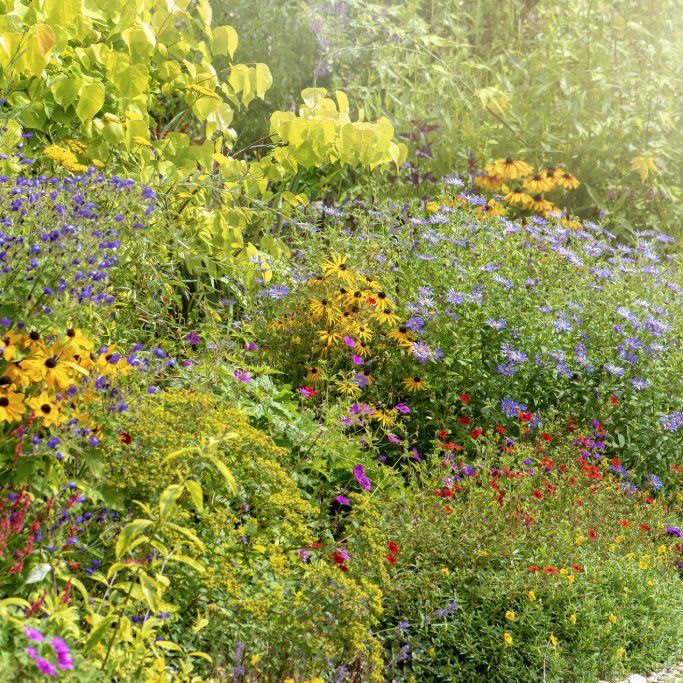[ad_1]
If you’re considering building one, it’s a good idea to know what a rain garden costs and what it takes to do it right. A rain garden is a natural solution for stormwater runoff that creates flooding and pollution, since it is designed to absorb and filter rainwater.
The EPA describes a rain garden as, “… a depressed area in the landscape that collects rain water from a roof, driveway or street and allows it to soak into the ground. Planted with grasses and flowering perennials, rain gardens can be a cost-effective and beautiful way to reduce runoff from your property.
We would add that a rain garden is a sustainable and environmentally friendly way to manage stormwater.
How Much Does a Rain Garden Cost?
A rain garden can be expensive or reasonably priced, depending on how you approach it. Of course, size also plays a role. The larger the area you hope to cover, the more it will cost to build.
The biggest cost factor comes down to choosing between doing the work yourself or hiring a landscaping service. Expect a professional rain garden cost per square foot to be between $10 and $13. Professional landscapers charge for design, construction, plants and other materials, and labor.
If you buy the materials and plants and do all the work, you will pay between $3 and $5 per square foot. Even when doing the work yourself, you can keep the budget on the low end with smart choices.
Designing a Budget-Friendly Rain Garden
First, understand that creating a rain garden is already a budget-friendly decision. If you have a problem area where water collects and pools, a rain garden is a more cost-effective solution than a traditional stormwater management system.
The latter use channels, pipes, and other structures to divert stormwater into local streams and rivers. This poses several problems, including pollution, but it can also be expensive to construct. A rain garden is less expensive and as we mentioned, more environmentally friendly.
The first way to save on the cost of a rain garden is to do the work yourself and enlist the assistance of friends or neighbors to get the job done more quickly and efficiently. This gives you immediate and significant savings compared to working with a professional service. Here are some other ways to make a rain garden more budget-friendly:
- Start with a design – Focus on the areas of your yard or garden that collect and hold standing water. Create a design that minimizes the space you need to cover with new plants or rocks. Without a design, you might end up buying more than you need or covering more space than necessary.
- Choose the right plants – Part of your design process should be choosing plants for the rain garden. Select plants that grow in moist to wet soil. If you choose inappropriate plants, they will likely die and need to be replaced, costing you even more.
- Choose native plants – Native plants are ultimately less expensive than exotics or ornamentals. They are designed to grow and thrive in your wetter native ecosystems. Check with your local extension office for recommendations for native rain garden plants.
- Plan for dense vegetation – Although it might require spending more on plants initially, a dense rain garden design saves money in the long run. With dense vegetation, you won’t need to buy mulch. Not only does mulch cost money initially, but it also needs to be replaced regularly. It is an ongoing maintenance cost. Denser plantings negate the need for mulch and will control erosion better.
- Find freebies – Wherever possible, look for free plants and materials you can get at low cost or for free. Start plants well in advance from seed. Take advantage of garden center sales, and take cuttings from friends and neighbors to acquire new plants. Starting with seeds or cuttings requires planning more in advance. You’ll need time for them to get up to size compared to buying transplants. If you need rocks for the garden design, look around your garden for those you can move.
Rain garden costs shouldn’t keep you from using this natural and sustainable solution to managing rainwater on your property. Once you build it, this type of garden will repay you in natural beauty, erosion control, and many other ways.
[ad_2]

